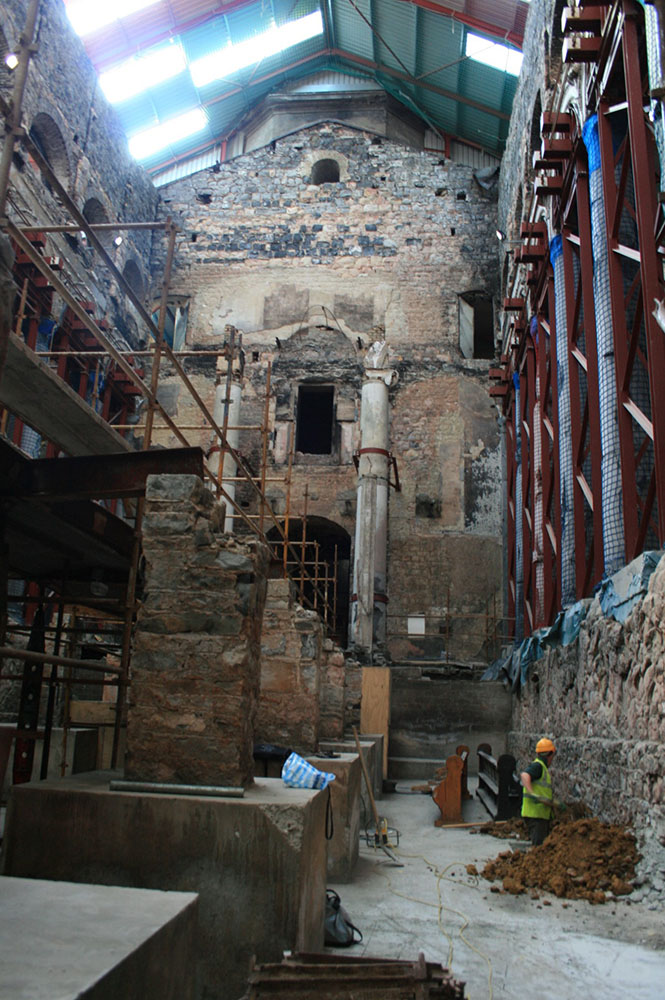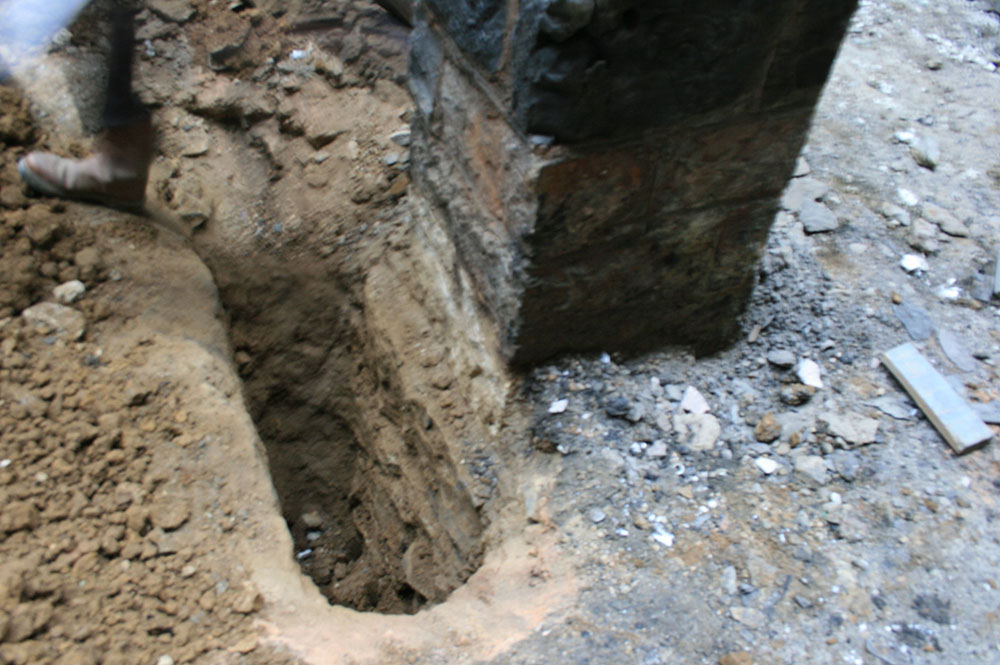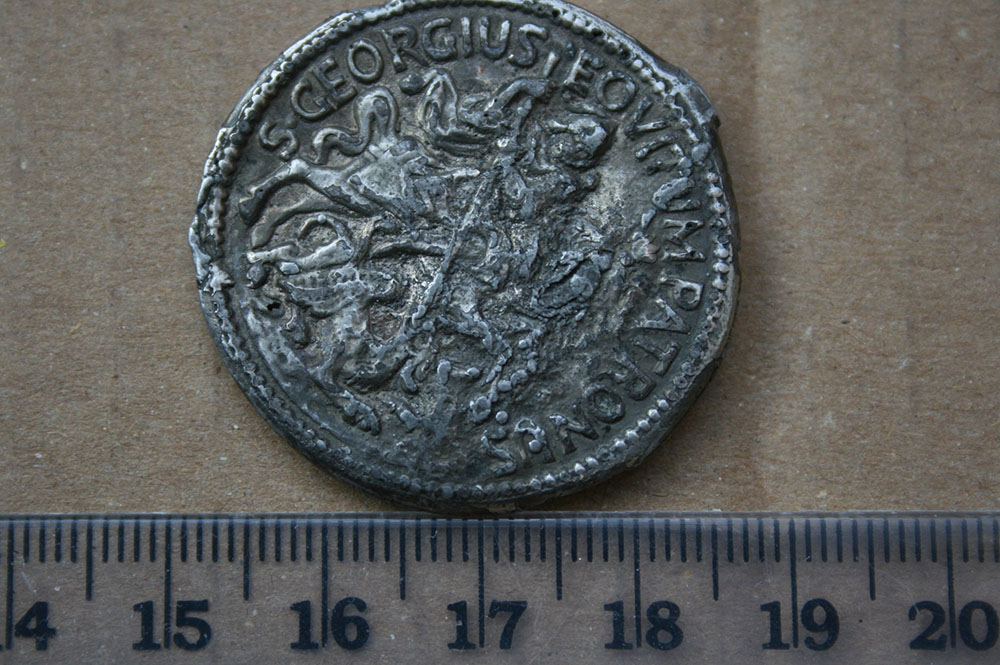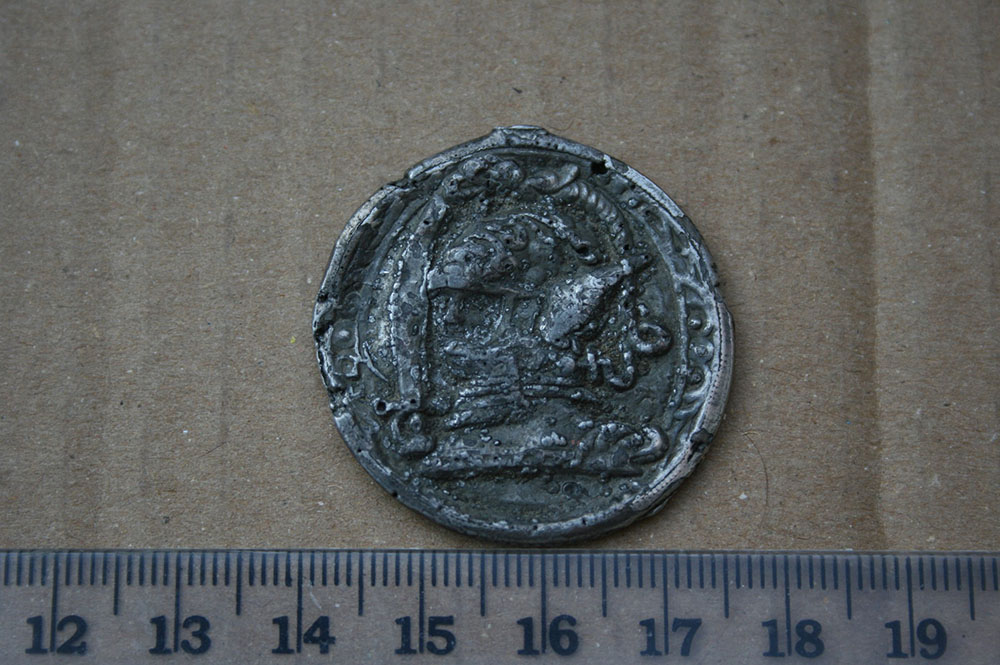County: Longford Site name: ST MEL’S CATHEDRAL
Sites and Monuments Record No.: LF013-026 Licence number: 11E0412
Author: Judith Carroll
Site type: Post-medieval
Period/Dating: —
ITM: E 613441m, N 775298m
Latitude, Longitude (decimal degrees): 53.727168, -7.796326
Monitoring was carried out in St Mel’s Cathedral during the digging of test pits by the engineers to test subsurface stratigraphy and the foundations prior to the restoration of the cathedral. The cathedral was very badly damaged in the fire of Christmas Day 2009 and now requires extensive rebuilding of its interior, which will include substantial groundworks. The test pits, 23 in all, were dug in the interior and on the exterior of the building between September and October 2011.
St Mel’s Cathedral is situated on the south-east of Longford town (LF013-026) at a juncture of roads, including the main Dublin road as it turns into Longford. The cathedral, a protected structure (NIAH reg. no. 13003002), was built between 1840 and 1893 and is a large neoclassical structure with a nave reached through a portico accessed by steps. It was built on the grounds of an earlier Catholic church (extant throughout the 19th century and probably earlier) and occupies a space which was once the grounds of that church. The outer walls of the cathedral are intact, and the basement area, where most of the subsurface works will take place for the restoration project, was relatively unscathed by the fire.

No. 418. First-edition OS 6in. map of 1836, showing the pre-cathedral Roman Catholic church on the site of St Mel’s. The cathedral was built on the grounds of this earlier church (see red arrow).
Quite a lot of post-medieval pottery, dating from between the 18th and early 19th centuries, came to light during the digging of the pipes, as did pipe stem fragments and a fragment of a horseshoe. Animal bone was also found in the pits. No stratified finds or features were found during the monitoring of the test pits.
A pewter medallion depicting St George was found by the contractor during the clearing of the basement area immediately prior to the testing. St George is depicted both on the obverse and on the reverse. No parallels for this medallion have as yet been found, but it appears not to be a war medal, as such medals (UK), which seem to have been most common in the First World War, had the monarch’s head on the back. In the US they would appear to be late 20th-century in date, while this medal would seem to be early 20th-century at the latest. This medal may be similar to a ‘St Christopher’ medal.

(Above right) No. 418. General view towards the south of St Mel’s Cathedral during trial testing.

(Above) No. 418. Trench 10.

(Above) No. 418. St George medallion (obverse).

(Below) No. 418. St George medallion (reverse).
Judith Carroll & Company Ltd, Consultant Archaeologists, 11 Anglesea Street, Temple Bar, Dublin 2